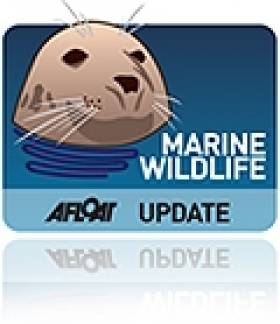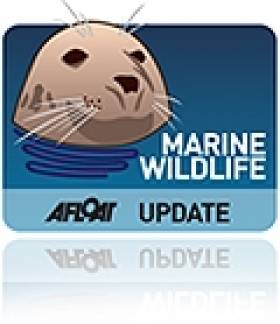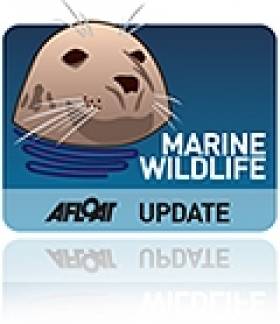Displaying items by tag: Birdwatch Ireland
Birdwatch Ireland Seeks Citizen Scientists for Raptor and River Bird Surveys in Dublin
BirdWatch Ireland is seeking citizen scientists for records of raptors and river birds in Dublin City this summer.
The Dublin City Raptor Survey is seeking records of Peregrine Falcon, Sparrowhawk, Kestrel, Buzzard, Long-eared Owl and Barn Owl, while the Dublin City River Bird Survey is seeking records of Grey Wagtail, Kingfisher, Sand Martin and Dipper.
Raptor and river bird populations are often under-recorded in Ireland due to their ecology, Birdwatch Ireland notes.
“Several bird species are of significant conservation concern, including the Grey Wagtail, which declined by 67% between 1998 and 2016,”it says.
“Meanwhile, raptors such as Kestrel and Barn Owl are Red-listed species, meaning they are at risk of extinction in Ireland,”it notes.
The survey running until September 30th is being run by Birdwatch Ireland in collaboration with Dublin City Council as part of the Dublin City Biodiversity Action Plan.
It is supported by the National Biodiversity Data Centre.
“As urbanisation is increasing rapidly in Ireland, we need to better understand our baseline population of river birds and how are they faring in an increasingly urbanised environment,”it says.
“This information will inform conservation measures for these species. Citizen scientists are key to these projects, and your knowledge and sightings will make a significant contribution to our understanding of river bird and raptor populations and their distribution in Dublin city,” it says.
These surveys can be undertaken by people of all ages at any Dublin city location, and there is no minimum time commitment.
Participants should have some basic raptor and/or river bird identification skills. Binoculars are recommended but not required.
To learn more about these surveys and to get involved, visit here
Meanwhile, as Afloat reported earlier, Dublin Port Company (DPC) is welcoming back its breeding terns for the summer months. Among these returning birds is likely an Arctic Tern that was first ringed in Dublin Port in the year 2000 and has been flying back and forth from Antarctica ever since. At least 23 years old, this is the oldest Arctic Tern on record in the Republic of Ireland.
Birdwatch Ireland Hails New 30 Million Euro Scheme for Waders
BirdWatch Ireland has welcomed the announcement of a new scheme for the protection and conservation of breeding waders.
€30 million has been set aside for the Breeding Wader EIP (European Innovation Partnership), according to the Minister of State for Heritage and Electoral Reform, Malcolm Noonan.
A sum of €22.5 million is to be invested by the National Parks and Wildlife Service, with the remaining €7.5 million coming from the Department of Agriculture, Food and the Marine.
"Waders are amongst the most threatened of all breeding birds in Ireland"
Waders are amongst the most threatened of all breeding birds in Ireland, with six of the eight regularly occurring species on the Red List of Birds of Conservation Concern in Ireland, Birdwatch Ireland says.
The six species are the curlew, lapwing, dunlin, golden plover, redshank and snipe.
Five of these species have declined by at least 50% in the last 40 years.
 Minister of State for Heritage and Electoral Reform, Malcolm Noonan
Minister of State for Heritage and Electoral Reform, Malcolm Noonan
Curlew and lapwing have each declined by over 90% in the last 20 years and are considered to be approaching globally threatened status by BirdLife International, it says.
“Loss of breeding habitat through agricultural intensification, draining of peatlands and afforestation have all contributed to these declines, but widespread predation of nests and chicks by generalist predators such as foxes and crows have also severely impacted remaining populations in recent years,” Birdwatch Ireland says.
The organisation says it had previously recognised that a scheme underpinned by at least €30 million was required to support farmers to undertake measures to save Ireland’s breeding waders from extinction.
“ We are pleased that the Irish government has taken heed,” it said.
“The Government has been implementing measures aimed at protecting and restoring populations, for example, through the Acres Co-operation scheme and the Curlew Conservation Programmes. However, more ambitious plans are required if these iconic birds are to be saved from extinction,” it says.
“The new measures which have just been announced could make a significant difference to saving breeding waders, but must be targeted and implemented correctly,” Birdwatch Ireland chief executive officer Linda Lennon said.
“ Farmers have long wanted to act for nature but have lacked the funding to enable them to do so. This new funding stream must enable farmers to put in place habitat management measures to protect breeding waders on their land.”
“Predator control measures, including the installation of specialised fencing to exclude predators, must also be part of the solution. The effectiveness of such fencing has already been proven beyond doubt by projects implemented by BirdWatch Ireland and others and is crucial to efforts to save our breeding waders,” she said.
Birdwatch Ireland Expresses Alarm at Avian Flu Spread in Seabirds and Calls for Urgent Response Plan from Government
BirdWatch Ireland has said it is “shocked” at the spread of a highly virulent strain of avian flu in seabird colonies in Britain, and says Ireland needs to develop a response plan urgently.
No cases of highly pathogenic avian influenza (HPAI) have been positively identified in seabirds in the Republic of Ireland yet, but cases have been confirmed in several locations in Northern Ireland, it says.
The NGO is calling on the government to convene key stakeholders “urgently” with a view to developing and implementing a response plan to the growing threat of the spread in Ireland.
“We are witnessing the potential decimation of seabird populations on a scale that has not been seen before in our lifetimes. We are as a result gravely concerned for seabird colonies in Ireland,”Birdwatch Ireland says.
“We believe that it is only a matter of time before a wild bird is tested positive by Department of Agriculture, Food and Marine veterinary staff, but casual sightings indicate that the disease is probably present in our wild birds already,” it says.
“HPAI has the potential to spread rapidly in breeding seabird colonies, as seabirds gather in high numbers and in close proximity to lay eggs and rear chicks on Irish cliffs, headlands and islands,”it says.
Birdwatch Ireland stresses the international importance of Irish colonies, with Rockabill Island off the coast of Skerries in north County Dublin holding up to 80% of Europe’s breeding Roseate Terns.
The Kilcoole, County Wicklow Little Tern colony holds 40% of Ireland’s Little Tern population, it says, while Manx Shearwater occurs on just a handful of colonies.
Sites off the south-east such as Great Saltee island hold internationally important breeding seabird populations, including the gannet, which has been impacted particularly severely, it says.
It says that given that 23 of Ireland’s 24 breeding seabirds are already red or amber listed birds of conservation concern, with global threats to the puffin and kittiwake, the government here must act very quickly and take the HPAI threat seriously.
Birdwatch Ireland senior seabird conservation officer Dr Stephen Newton described the situation as “frightening”.
“There are three or four species where virtually the whole of the Irish, or sometimes the whole of the European, population nest at just one or two sites. Our big fear is that these could be wiped out completely,” Dr Newton says.
BirdWatch Ireland says that with the agreement of the National Parks and Wildlife Service it is ceasing research and monitoring activities at seabird colonies, where staff and volunteers would be in very close proximity to wild birds, except in exceptional circumstances.
“ This will help reduce disturbance and minimise the risk of spreading the disease,”it says.
“Our seabirds are the life and soul of the coastline in the summer. The Irish Government has a responsibility to protect them as much as possible from this deadly disease,”it says.
“HPAI originated in intensively manged poultry flocks and then infected wild birds. Putting in place measures which may help to minimise the spread in Ireland is essential to prevent further biodiversity loss, but also to protect poultry flocks which could be re-infected from the disease circulating in the wild bird population,”it says.
It advises anyone who sees a dead or distressed wild bird to report it to the Department of Agriculture, Fisheries and the Marine at https://aviancheck.apps.rhos.agriculture.gov.ie/report.
Birdwatch Ireland: Dalkey Island Evening Viewings
#MARINE WILDLIFE – The South Dublin Branch of BirdWatch Ireland is organising outdoor meetings over the summer which include watching terns and other species during July at Coliemore Harbour, Dalkey, writes Jehan Ashmore.
The first meeting is Tuesday 3rd July (6.30-8pm) and every other Tuesday during the month. None-members of Birdwatch Ireland are invited to the evenings which are run in conjunction with Dun Laoghaire-Rathdown County Council (DLRCoCo).
During the seabird viewing evenings, BirdWatch Ireland experts will be on hand to show the breeding terns and other birds whose habitat is not just confined to Dalkey Island. The island encompasses Lamb Island and the rocky outcrops of Clare and Maiden Rocks which straddle towards Dublin Bay while to the east of the island lies The Muglins with its lighthouse.
For further information including the Dalkey Tern Project visit: www.southdublinbirds.com/events/events.php and www.dlrevents.ie/
'Very Rare' Sighting of Albatross in Irish Skies
#MARINE WILDLIFE - Staff and students from the Galway-Mayo Institute of Technology spotted an black-browed albatross in what was a "very rare" sighting of the bird in Ireland's skies, The Irish Times reports.
The group was on board the State marine research vessel Celtic Explorer off the southwest coast when they witnessed the albatross, also known as a Mollymawk, which is noted for its dark eye stripe.
The black-browed albatross is normally restricted to the Southern Hemisphere, but Birdwatch Ireland's Niall Hatch said it has been spotted from headlands in Ireland in the past.
As previously reported on Afloat.ie, the GMIT group were among a party of 20 scientists from Ireland, Nothern Ireland and Scotland carrying out a study of whales, dolphins, seabirds and plankton in the Atlantic.
#MARINE WILDLIFE - The Limerick branch of Birdwatch Ireland is seeking volunteers to assist in rescuing birds from oil spillages in the Shannon Estuary.
A report in the Limerick Post recounts a recent meeting at Shannon Rowing Club, where Birdwatch Ireand highlighted the impact on the environment and marine wildlife from both major and minor oil spills.
The meeting also discussed the role that local birdwatchers can play in determining crucial spillage incident response times.
A training exercise at Poulnasherry Bay is being organised for next month using equipment donated to the Irish Seal Sanctuary, preceeded by a similated planning exercise and "on-the-ground response".
The Irish Seal Sanctuary will also provide opportunities for training in the rehabilitation and cleaning of spillage-affected birds.
The Limerick Post has much more on this story HERE.
Wildlife Groups Pledge Union With Oil Spill Response Plan
#MARINE WILDLIFE - The Evening Herald has highlighted the work of a new union of wildlife protection groups which is training volunteers to act the event of serious environmental threats to Ireland's sea bird population.
Wildlife rescue volunteer Pauline Beades from Garristown in north Co Dublin has been working with Ireland's animal groups to change the official approach to wildlife - particularly birds - that get caught in oil spills.
The Irish Seal Sanctuary, Birdwatch Ireland, the ISPCA, the Irish Whale and Dolphin Group (IWDG), Coastwatch and Irish Wildlife Trust have written a joint "letter of comfort" for the Irish Coast Guard, which is the State body charged with dealing with coastal oil spills.
The groups have pledged to work together in the event of any oil spill that involves a threat to marine wildlife.
Their response plan involves an initial wave of volunteers walking beaches to gather affected animals and providing first aid, followed by transfering them to veterinarians in specialised field hospitals, as well as facilities for longer-term care.
Recently Beades helped train volunteers in Limerick, who also attended lectures and demonstrations from visiting wildlife rescue experts from Europe to prepare for any potential sea-borne wildlife emergency.

































































